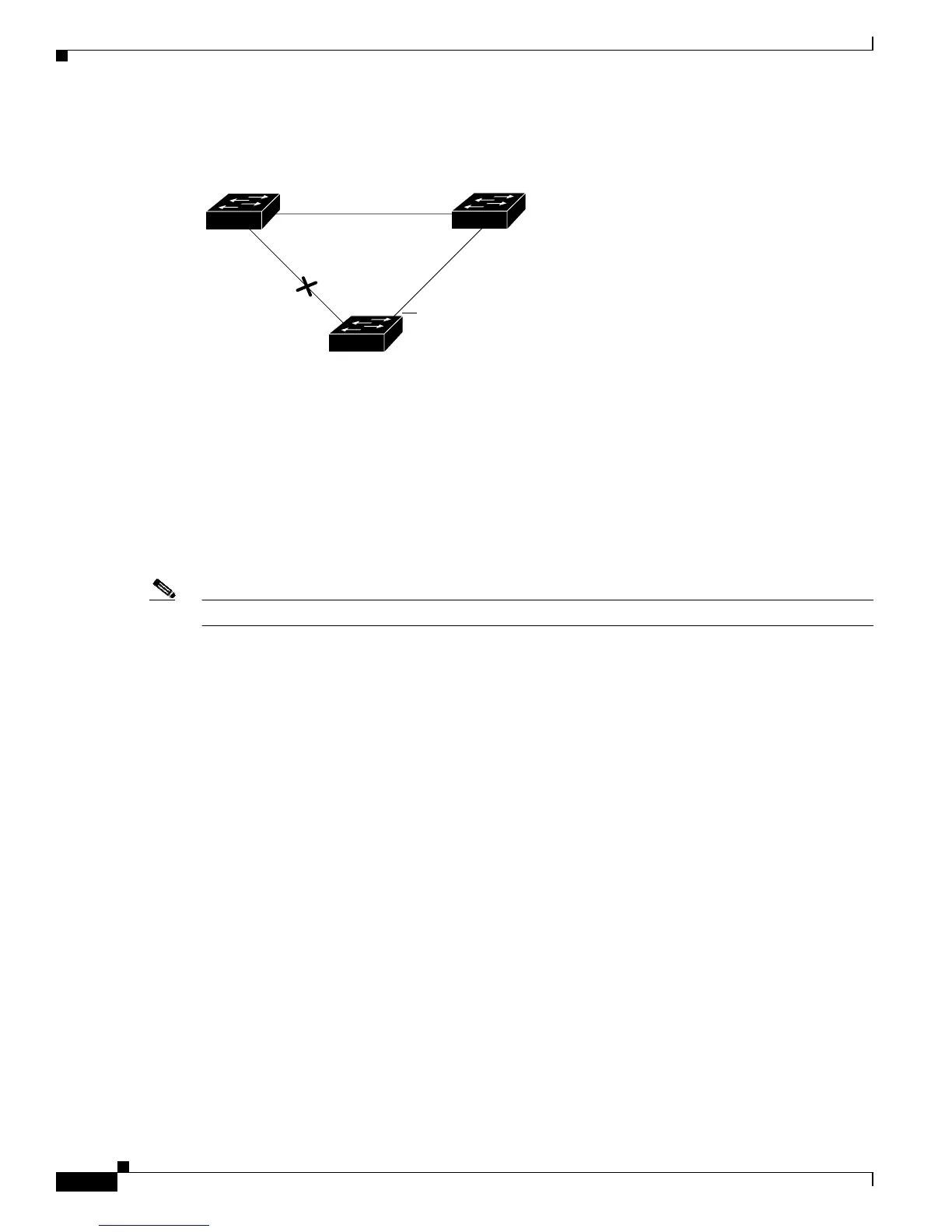15-6
Software Configuration Guide—Release 12.2(25)EW
OL-6696-01
Chapter 15 Configuring STP Features
Overview of BackboneFast
Figure 15-3 UplinkFast After Direct Link Failure
Overview of BackboneFast
BackboneFast is a complementary technology to UplinkFast. Whereas UplinkFast is designed to quickly
respond to failures on links directly connected to leaf-node switches, it does not help with indirect
failures in the backbone core. BackboneFast optimizes based on the Max Age setting. It allows the
default convergence time for indirect failures to be reduced from 50 seconds to 30 seconds. However, it
never eliminates forward delays and offers no assistance for direct failures.
Note BackboneFast should be enabled on every switch in your network.
Sometimes a switch receives a BPDU from a designated switch that identifies the root bridge and the
designated bridge as the same switch. Because this shouldn’t happen, the BPDU is considered inferior.
BPDUs are considered inferior when a link from the designated switch has lost its link to the root bridge.
The designated switch transmits the BPDUs with the information that it is now the root bridge as well
as the designated bridge. The receiving switch will ignore the inferior BPDU for the time defined by the
Max Age setting.
After receiving inferior BPDUs, the receiving switch will try to determine if there is an alternate path to
the root bridge.
• If the port that the inferior BPDUs are received on is already in blocking mode, then the root port
and other blocked ports on the switch become alternate paths to the root bridge.
• If the inferior BPDUs are received on a root port, then all presently blocking ports become the
alternate paths to the root bridge. Also, if the inferior BPDUs are received on a root port and there
are no other blocking ports on the switch, the receiving switch assumes that the link to the root
bridge is down and the time defined by the Max Age setting expires, which turns the switch into the
root switch.
If the switch finds an alternate path to the root bridge, it will use this new alternate path. This new path,
and any other alternate paths, will be used to send a Root Link Query (RLQ) BPDU. When BackboneFast
is enabled, the RLQ BPDUs are sent out as soon as an inferior BPDU is received. This process can enable
faster convergence in the event of a backbone link failure.
Figure 15-4 shows an example of a topology with no link failures. Switch A, the root switch, connects
directly to Switch B over link L1 and to Switch C over link L2. In this example, because switch B has a
lower priority than A but higher than C, switch B becomes the designated bridge for L3. Consequently,
the Layer 2 interface on Switch C that connects directly to Switch B must be in the blocking state.
L1
L2 L3
Switch C
Switch A
(Root)
Switch B
UplinkFast transitions port
directly to forwarding state
Link failure
11242

